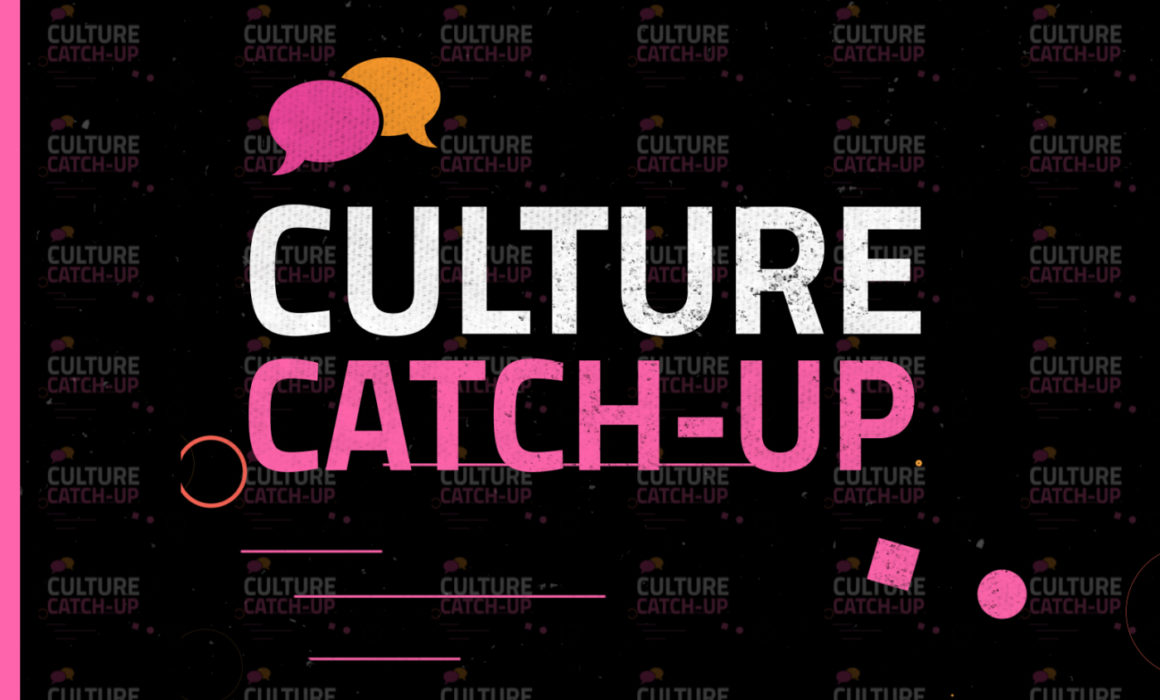#CULTURECATCHUP ? 15 October 2019
The internet is full of content that can make us laugh, freak us out and fill us with hope for the human race. But it’s more than just trolls and lols. If you know what to look for, memes, tweets and everything in between can serve as an early warning system for cultural and behavioural shifts. Every other week, we’ll be highlighting a few you might’ve missed.
This week, among other things, we’re exploring Will Smith’s TikTok account, threads about parliament buildings and a French Facebook group about the labour market (no, really).
Will Smith has joined TikTok and it might not be a good thing
Will Smith knows how to play it on social; he’s killed it on YouTube (6 million subscribers) and Instagram (38.5 million followers) by replicating the humour and content formats with precision, seemingly without losing his own identity as a veteran celebrity. Now, he’s making an entrance on TikTok. Exhibit A:
For Will, this makes perfect sense – TikTok is the viral platform du jour, credited with turning Lizzo’s Truth Hurts into a Billboard #1 and catapulting Brittany Tomlinson (aka. Kombucha Girl) to international stardom. He’s not the only A-Lister in the game either – Reese Witherspoon also recently signed up.
But these actors’ presence on TikTok is also symbolic of the fact that it’s already becoming a commercial platform. While it was a decade or more until traditional celebrities really started to ‘get’ YouTube – culminating with Will himself controversially hosting YouTube’s infamous Rewind video in 2018 – celebrities are invading TikTok barely a year since it’s become recognised as a part of mass popular culture. How long until its young, agile audience begin their exodus to the next haven that’s free from ads and adults alike?
TL;DR: The commercialisation of TikTok could be happening quicker than expected, which will force the platform and its users to adapt if it’s going to survive.
—
This Twitter thread about Parliament buildings is an in-platform listicle
Sometimes, the internet gives us gifts that we didn’t know we needed. Take these threads as an example:
I'm a nerd and I'm procrastinating and once I had the "lol, I should do this" thought it very quickly became a "oh no I really want to do this" situation SO…
PARLIAMENT BUILDINGS OF THE WORLD: A Twitter Review Thread.
— Allan Faulds (@AFaulds) September 30, 2019
??Albania??
Not exactly exciting, sorry guys. Do like the nice blue columns but otherwise meh. Apparently there have long been plans to build a shiny new parliament, but seems to have stalled circa 2011
(Image source: https://t.co/r44zjZGVn2) pic.twitter.com/GYJGFfqXWz
— Allan Faulds (@AFaulds) September 30, 2019
This good-humoured critique gives off a definitively Buzzfeed tone, as does the format. Because arguably, the Twitter thread is the listicle 2.0. Much like the format once popularised Buzzfeed, Twitter threads combine low-level information hits that *could* one day be useful in a pub quiz, with the easy mindlessness of endlessly scrollable content. In the context of Twitter, threads make anyone who fancies it a listicle author, providing a drag-and-drop storytelling framework, which enables users to construct a narrative without compromising on simplicity.
TL;DR: Twitter threads enable users to construct a narrative around their tweets, without losing the scrollable simplicity that makes tweets so engaging.
—
This Twitter user knows how to create cross-platform content
Recent weeks have seen conversation ramp up around Instagram’s role as a home for second-hand Twitter humour, culminating in Twitter’s tongue-in-cheek sign up to Instagram, where its bio simply reads ‘Screenshots of Tweets.’ But while it’s true screenshots of Tweets have found a home on Instagram, it’s more than a place where Tweets go to die. Check out this tweet from American TV writer Jesse McLaren:
What piece of pop culture has ruined your first name?
— Jesse McLaren (@McJesse) September 25, 2019
This tweet got more than 33,000 comments. So Jesse sifted through all of the best responses, and posted them on Instagram:
This repost demonstrates an understanding of the differences in how people engage with content on each platform; while Twitter is an endless scroll down a rabbit hole, Instagram is a place for cleaner, more curated content. By taking the highlights from comments on Twitter and reposting them on Instagram, Jesse maximised the reach of the post on each platform respectively.
TL;DR: Instagram and Twitter serve very different purposes, but these posts exemplify how they can perfectly complement each other.
—
NdFlex is a Facebook Group for chats about the French labour market
NdFlex – an abbreviation of ‘Neurchi de flexibilisation du marché du travail’ – is a French Facebook Group. The word ‘neurchi’ (a reversed pronunciation of ‘chineur’, which means ‘bargain hunter’) is a vernacular term for an online group in which memes around a specific subject are shared. This particular neurchi is a closed Group about the flexibilisation of the labour market in France, and the tensions for those who work within it. And it’s clearly struck a chord; since January, NdFlex has amassed more than 30,000 members. A typical post looks like this:

The topic is timely; Macron’s labour reforms are shifting the dynamics of working life in France, seeing employers demand longer hours, but also normalising ‘flexible’ contracts that ultimately give employers all the power. NdFlex is giving users a safe space in which to discuss the impact of this topic. And they’re not just sharing memes. They’re also using this group to tell personal stories, share news and participate in the discussion. Protected by a dedicated team of moderators, NdFlex has become a platform for members to have open discussion with people they don’t know about potentially controversial subjects, without the fear of trolls escalating or diverting the conversation.
TL;DR: People are using closed groups as digital safe spaces that enable and protect healthy debate around specific topics of interest.
—
Harry Styles’ cryptic tweet was the perfect springboard for memes
Harry Styles rarely tweets. But with a hyper-attentive digital audience, anything he does tweet gains maximum attention. This week, he broke a month-long Twitter silence with this:
Do
— Harry Styles. (@Harry_Styles) October 5, 2019
His dedicated fandom – whose voracious appetite for content can’t be satiated with Harry’s sparse digital presence – were quick to jump on it, sure that ‘Do’ could be hinting at everything from new album drops to One Direction reunions. Others speculated he could also just be singing ‘Baby Shark’, or posting a cryptic call to action for ‘Do Something Nice Day’.
The point is that we don’t know. The tweet is reminiscent of Trump’s ‘covfefe’, in that it just makes no sense. In this sense, its virality occurred at the intersection of two key factors:
-
- Harry Styles has a dedicated enough following, that millions pay attention when he has something to say.
- Nonsensical, context-free content is the perfect meme fodder, as it gives people free reign to create their own context.
TL;DR: The best raw materials for memes are those that give onlookers the freedom to build their own context around them.


Trackback: best ico 2021
Trackback: Deep Web
Trackback: weed for sale
Trackback: Firearms For Sale Near Me
Trackback: relx
Trackback: cavapoo puppies for sale
Trackback: Buy Guns Online
Trackback: สล็อตวอเลท ไม่มีขั้นต่ำ
Trackback: cheap replica cartier rotonde chronograph watches review
Trackback: concur solution.com
Trackback: fresh cvv2
Trackback: nova88
Trackback: dmt vape for sale
Trackback: sbo
Trackback: สล็อตวอเลท ไม่มีขั้นต่ำ
Trackback: winbet 娛樂
Trackback: passive income
Trackback: block screenshot
Trackback: maxbet
Trackback: Pulse Power plans
Trackback: มังงะ